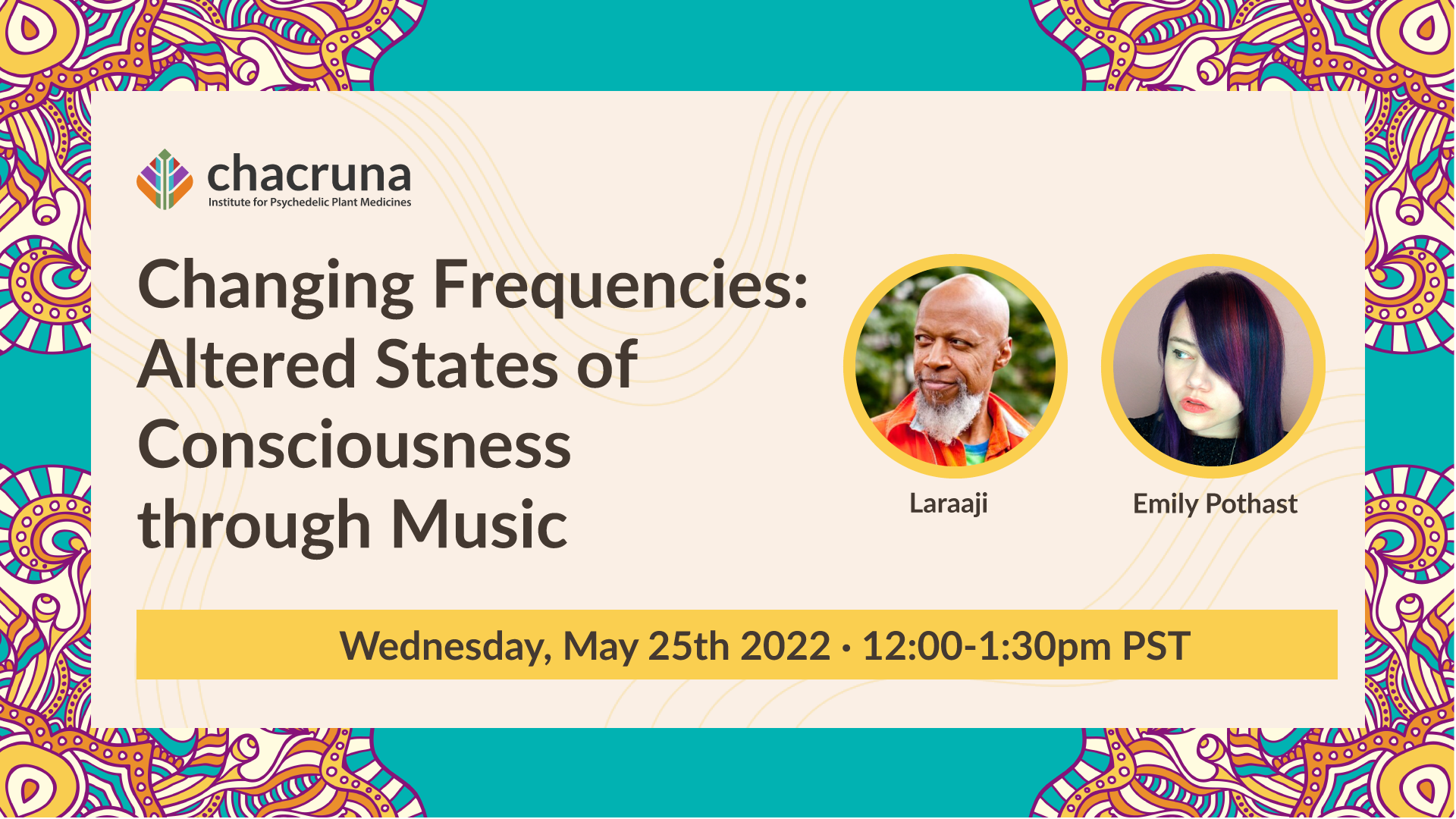- Course: Roots of Psychedelic Therapy: Shamanism, Ritual and Traditional Uses of Sacred Plants - June 6, 2025
- Indigenous Knowledge in the Digital Age - June 5, 2025
- Meet Chacruna at Psychedelic Science 2025 - June 5, 2025
Wednesday, May 25th, 2022 from 12:00-1:30pm PST
There is an inevitable relationship between music and consciousness. Music and sound are often meaningful aspects when experiencing altered states of consciousness; music can have powerful healing, spiritual and aesthetic effects under psychedelics. Join Laraaji, a musician that has maintained a pursuit of spiritual transcendence through music since the mid-70s, in this forum moderated by Emily Pothast, who is an artist, musician, writer, and historian whose research-based practice considers the intertwined dynamics of embodied experience. Laraaji often speaks about the power of music to alter one’s “trance frequencies”. Some questions addressed in this forum include: What does it mean to change frequencies? What is happening when you change frequencies? What are the differences between temporary and permanent frequency change? How do we mindfully integrate a change in frequency? What roles do substances, sound and positive affirmation play in frequency changing?

Philadelphia-born\New Jersey-raised polymath Laraaji has maintained a pursuit of spiritual transcendence through music since the mid-70s. After several years of studiously developing an aesthetic informed by Eastern faiths and transcendental research in his long-time home in Harlem, in 1979 Brian Eno stumbled upon him busking in Washington Square Park in New York, improvising celestial meditations with his electric zither. The producer invited him to contribute to his influential Ambient series, resulting in the 1980 album Day of Radiance. Ever since he’s remained an outsized figure in new age and ambient music, eschewing synthesizers in favor of hand-made sounds, consistently embracing a human presence in his ever-seeking performances. Whether using monochord instruments, singing, or deploying electronics-kissed percussion, Laraaji’s music remains connected to cosmic African-American tradition, and as hypnotically beautiful as his work has been he’s never been afraid to inject ripples of tension and dissonance into his trance-inducing journeys. also directs Therapeutic laughter playshops for organizations and festivals.

Emily Pothast is an artist, musician, writer, and historian whose research-based practice considers the intertwined dynamics of embodied experience, material culture, politics, and belief. She holds an MFA from the University of Washington and is currently a PhD student in Art and Religion at the Graduate Theological Union in Berkeley, where she recently taught the self-designed course Sound As Sacred Presence. Co-founder of the musical projects Midday Veil and Hair and Space Museum, Emily is an experienced composer, performer, and improviser, with an abiding interest in the relationship between sound and psychedelic experience. Her writing on art and music has appeared in The Wire, Art In America, and Hyperallergic.
This talk will be recorded and immediately available for rewatch for all attendees.
Do you love Chacruna? Want free entry to events, access to our online member community and exclusive events, free merchandise, and much more! Become a member!
Scholarships Available – apply here.
Take a minute to browse our stock:
Did you enjoy reading this article?
Please support Chacruna's work by donating to us. We are an independent organization and we offer free education and advocacy for psychedelic plant medicines. We are a team of dedicated volunteers!
Can you help Chacruna advance cultural understanding around these substances?









